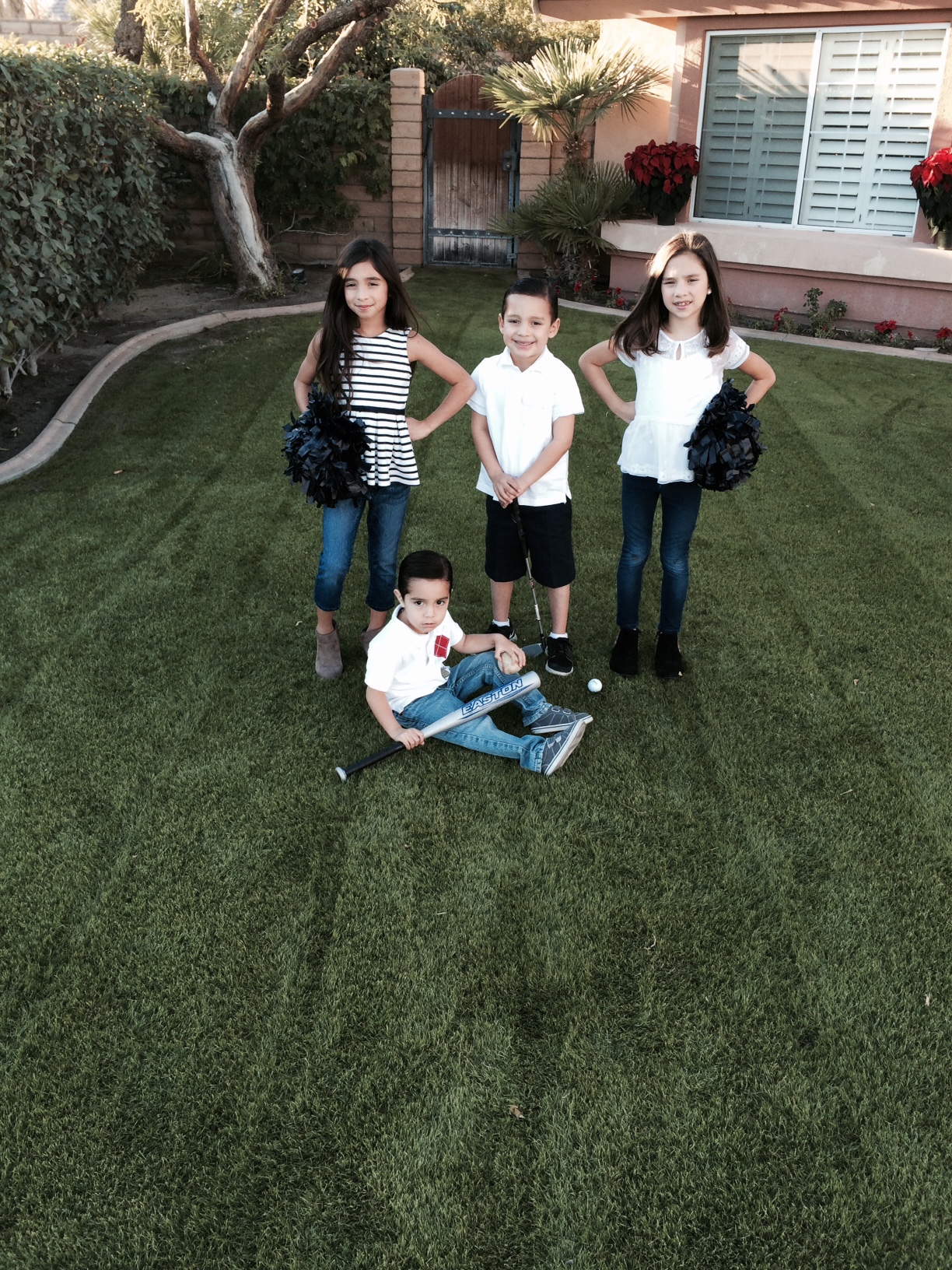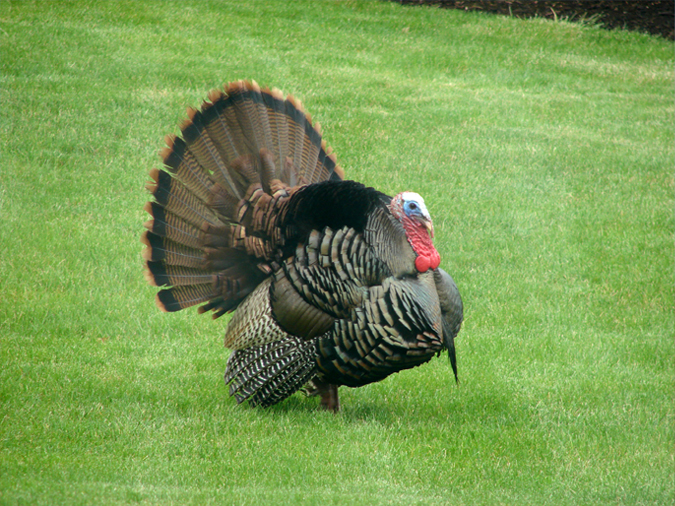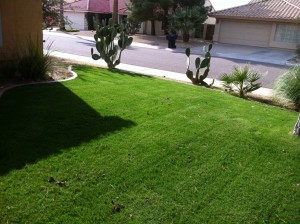May
Saving Water on Your Lawn and the Benefits of Natural Turfgrass
SAVING WATER………
Everyday we are reminded that we are in a drought situation. My last few blogs have been about this same subject, and I think it is important to continue with the topic.
The press is convinced that ripping out your lawn is the answer. But is it? No. You can have an environmentally beneficial lawn and use water wisely! Here are some more tips on how to save water while still keeping your lawn alive during our historic drought: Read the rest of this entry »
Comments Off on Saving Water on Your Lawn and the Benefits of Natural TurfgrassMay
Water Restrictions and Your Lawn. What Now? PART-2
So here we are, May of 2015, and for the first time in many of our lives we are being asked to cut our water usage by at least 25%. As I alluded to in PART-1 of using water wisely (please click here to read PART-1 if you have not already) many people view water consumption solely as an agricultural problem. It is easy to look at the percentages of water used by the agricultural industry and blame them for the water shortage, but have you considered that the real problem lies within us.
Did you know that over the past ten years the agriculture industry has lowered their water use rate from as much as 90% to less than 69% of total water consumed? Again many of you will look at the percentage of water used and say it is still too high, but the homeowner use rate has skyrocketed, while agriculture has learned to adapt and change.
Did you know the average family of four wastes 10,000 gallons of water a year waiting for hot water to arrive to their shower? Right there you can save 6% of your yearly water use. I know we’re supposed to be talking about landscape water rates, but more needs to be addressed than simply blaming one industry. I will be the first to tell you landscape water use rates need to go down. The average household wastes 16,000 gallons of water per year overwatering their landscapes. This is an additional 9% of your yearly water total being wasted. Today I will be giving you directions on how to not only save the 9% of overwatering, but I will also give you ways to save another 10% by watering smarter and using proper agronomic practices. I would be remised if I didn’t say this before I begin. Grass doesn’t waste water, people do. Read the rest of this entry »
Comments Off on Water Restrictions and Your Lawn. What Now? PART-2Mar
Transitioning Your Lawn for Spring
If you have taken a look at the extended forecast you most likely saw that temperatures in the desert areas will be hitting close to 100 this weekend. No one wants to see that in late March unless you’re a sod producer or looking to get your warm season lawn to green up. While it is great for green up, it is still too early to know if this weather will stay or if we will get a minor cold snap. If we were assured that the 90’s were here to stay I would tell you to really start pushing your warm season turf, but it is best to ease into the season until soil temperatures reach 64 degrees.
Either way, transition time is upon us and it is time to start easing into the summer grass season. For people with non- overseeded turf this weather is great news for their lawn, and for others transition can bring a few headaches. I have outlined some simple steps to help you get your lawn to go from ryegrass to bermudagrass without any anxiety.
Comments Off on Transitioning Your Lawn for SpringNov
Thanksgiving Tips for Your Lawn
As we approach Thanksgiving it is a good time to start thinking about your winter fertilizer program. In past blogs I talked about getting down a few fertilizer applications prior to the first frost of the year. In general we will receive our first frost sometime between Thanksgiving and the first week of December. The first couple of frosts are usually pretty mild, but as we get deeper into December we will get some hard freezes which will start to affect your roots. Once we get frost all the way down to the roots it makes it tougher for the plant to take up fertilizer so foliar applications generally provide the best response.
For those unfamiliar with why plants freeze let me provide you with a simplistic definition. Water vapor condenses into liquid water and forms ice as the temperature drops at or below 32 degrees. Temperatures on the ground are typically cooler than the air just a few feet above the ground surface. On a clear, calm night with no little wind the cold air sinks to the ground level and while the thermometer may not read 32 degrees or lower, the ground temperature is below freezing. You will notice that when there is a heavy cloud cover there is typically no frost. This is because the grass does not need to emit as much radiation because the clouds reflect the radiated heat. On a cloudy day dew will form on the ground making it very unlikely that frost will form on the ground.
Comments Off on Thanksgiving Tips for Your LawnSep
It is ALMOST Time to Overseed Your Warm Season Lawn
The days are getting shorter and the heat is starting to die down a little as we enter the fall season. With fall comes the onset of overseeding in many parts of the country and the west coast is no different. For those new to overseeding let me give you a brief definition. Overseeding is simply the process of seeding a cool season grass into your warm season turfgrass in order to maintain winter color. This is not a mandatory process if you have grass, but it is one of the options that are out there for homeowners and professionals.
There are a few options during the fall months to take care of your lawn and without question the most popular is to overseed. Outside of overseeding you have the option of using turf paint such as Endurant to give your dormant grass a nice green appearance or you can just let your lawn go dormant for the winter months (brown can be the new green!). There is no right or wrong approach so decide what you would like to do as the temperatures begin to drop over the coming weeks. If you will be letting your lawn go dormant it will stay fairly green until the first hard frost which is around Thanksgiving and will start to green up in late March. If you have a paspalum lawn you can usually get through the month of December with a green lawn and it will start greening up in early March.
Comments Off on It is ALMOST Time to Overseed Your Warm Season LawnAug
Evaluating Your Summer Lawn
As we move through the dog days of summer in California and Arizona, now is a good time to evaluate your turfgrass lawn. The summer is the optimal time to grow warm season turfgrasses so it is important to get good growth before the end of the season. The golden rule is that all warm season grasses need to have 100 days of growing without any competition in order to maintain their health. That is 100 days without any lingering ryegrass in the way. Think back to when the ryegrass was completely out of your lawn? Was it June or did it hang around until July? If you didn’t transition it by mowing lower and verticutting then most likely you still had some ryegrass until the humidity increased and wiped it out in July. Read the rest of this entry »
Comments Off on Evaluating Your Summer LawnMay
Soil Prep/Lawn Establishment
With the rising temperatures we have quickly entered the best time of the year to plant sod. I’m sure a few of you just read the first sentence and thought that I was crazy since we’re hitting 105-110 degrees most days. Warm season turf is so well adapted to this type of weather that establishing a lawn during the summer is a simple process with the right prep work and follow up. I’m going to outline some simple cost effective steps for those looking to put in a lawn this summer.
Living in the desert we all know that water is scarce so we want to do our best to preserve it and not overuse it. One of the best water saving tips is putting in an automatic sprinkler system. Before I proceed I will tell you that I don’t recommend putting in a new lawn without one. A good sprinkler system will allow you to put out the correct amount of water in a given period of time and will help eliminate waste.
Setting up a manual sprinkler or hose is inefficient, time consuming, and most of all it is very tough to gauge the amount of water you actually put out. Before putting in an irrigation system you should by a small gauge to check your homes water pressure. Knowing how much water pressure you have will determine how many sprinklers can be on each valve. Depending on the area you will be watering you may need a couple to several valves to correctly operate your irrigation system. Most sprinkler systems are set up with a valve that controls the drip lines to the plants and then a valve for each section of the turf. A home with 1000 square feet of turf will typically have two valves to control the lawn. If you have very low water pressure you will probably need to add a third valve so less sprinklers are running at one time.
Comments Off on Soil Prep/Lawn Establishment
May
SPRING TRANSITION FAQ
The word transition tends to conjure up some ugly thoughts in people’s minds. Transition is often used to describe moving from one stage to another or in the case of sports teams are often transitioning from one style of play to another. Fans of sports teams cringe when they hear the word transition and the same is true for most turf managers but with turf it is often an easy fix. My goal today is to answer some frequently asked questions on transition, sod install, fertilizer and watering for the summer. If you have another question that I didn’t list please let me know.
Q. I overseeded my lawn last fall and I can’t get the ryegrass to die off. Can I turn the water off and kill it?
A. Yes and no. You can turn the water off and severely stunt or kill the ryegrass but you will also do some serious harm to your warm season turf. It is best to cut your water back 30-40% and let it fade away with the warmer temperatures.
Comments Off on SPRING TRANSITION FAQOct
Watering Your Turf
By now most of you have overseeded for the fall or made the decision to let your turf go dormant for the winter. I think now is an appropriate time to talk about the best way to control your water bill and at the same time give your grass the best chance of thriving. Our extreme summers often give homeowners the wrong idea of just how much water is necessary to grow a green lawn. Read the rest of this entry »
Comments Off on Watering Your TurfSep
Overseeding Your Lawn 101
We’re getting closer to the overseeding process! I am sure many of you reading my blog have started to see perennial ryegrass arriving in stores by the truck full, but we are still a little early. It isn’t too early to start some of the initial prep work, but it is still a little hot to drop seed. I realize that some of you won’t have a choice in the timing of overseeding, but if you do have a choice it is best to wait. Today’s blog is going to give you 10 easy steps on how to overseed and establish a great lawn for the winter. I have also attached a short video on doing so. http://www.youtube.com/ Read the rest of this entry »
Comments Off on Overseeding Your Lawn 101





